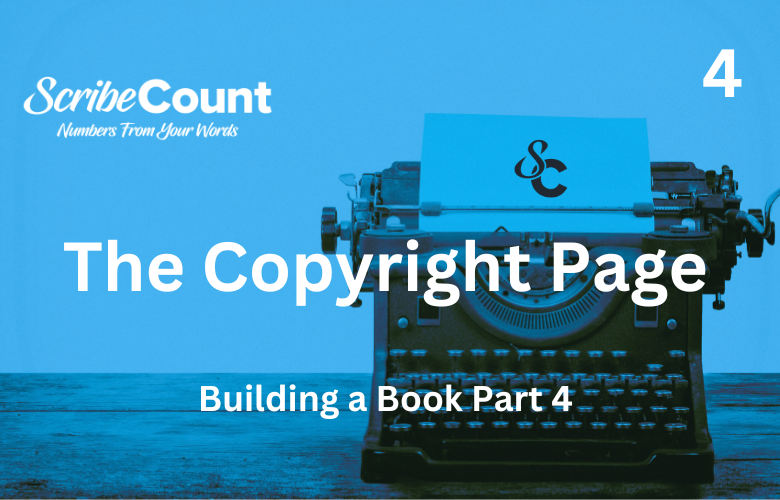Creating a Copyright Page for a Self-Published Novel
The copyright page of a self-published novel is a crucial component that ensures legal protection, provides necessary book details, and enhances professionalism. While traditionally found on the verso (back) of the title page, this page conveys copyright information, disclaimers, publishing data, and other important notices. This article explores the significance of the copyright page, its required and optional elements, and provides a sample layout for self-published authors.
The Importance of a Copyright Page
The copyright page is more than a formality; it serves several key functions. It establishes the author’s legal rights, protects the intellectual property, and provides necessary publication details for libraries, booksellers, and readers. Additionally, it can contain disclaimers to prevent legal disputes, acknowledgments of contributions, and edition or printing information for tracking and record-keeping.
Proper Format of a Copyright Page
A well-structured copyright page typically follows a specific order, presenting the information in a clear and concise manner. Though formatting may vary, most copyright pages include sections such as the copyright notice, publisher details, ISBN, disclaimers, edition notes, and additional optional elements.
Copyright Notice and Symbol Usage
The copyright notice is the most fundamental element. It asserts the author’s legal claim over the work and prevents unauthorized reproduction. The notice consists of three components:
The copyright symbol (©), which can be created using "Alt + 0169" on Windows or "Option + G" on Mac.
The copyright year.
The author's name or the entity holding the copyright.
For example:
© 2025 Jane Doe. All rights reserved.
"All Rights Reserved" Statement
Though not legally required, the "All rights reserved" statement reinforces copyright protection by explicitly restricting reproduction or distribution without permission. It often appears immediately after the copyright notice:
All rights reserved. No part of this book may be reproduced, stored, or transmitted in any form or by any means without prior written permission from the copyright holder, except for brief excerpts used in reviews or educational purposes.
ISBN (International Standard Book Number)
The ISBN is a unique identifier required for books distributed through retailers, libraries, and wholesalers. A separate ISBN is needed for each edition (e.g., hardcover, paperback, ebook). It should be listed clearly on the copyright page:
ISBN: 978-1-234567-89-0
LCCN (Library of Congress Control Number)
If an author has registered for an LCCN, it should be included to facilitate cataloging by libraries:
Library of Congress Control Number: 2025123456
Publisher Information
For self-published books, the author’s publishing imprint name, website, or address can be included:
Published by Doe Publishing www.janedoeauthor.com
Disclaimers
Disclaimers protect the author from legal issues. Common disclaimers include:
Fiction Disclaimer: "This is a work of fiction. Any similarities to real persons, living or dead, are purely coincidental."
Advice Disclaimer (for non-fiction elements): "The information in this book is for educational purposes only and should not be considered professional advice."
Credits (Illustrators, Cover Designers, Editors, etc.)
Acknowledging contributors such as editors, cover designers, and illustrators is optional but recommended:
Cover design by Jane Smith Edited by John Doe
Edition Information
If multiple editions exist, this should be indicated:
First Edition: March 2025
Printing Details and Printer’s Key
A printer’s key is a series of numbers that indicate the printing batch. For example:
10 9 8 7 6 5 4 3 2 1
The lowest number represents the print run. With each new printing of a book, the publisher instructs the printer to remove the lowest number from the line.
Example: If you see the numbers "1 2 3 4 5 6 7 8 9 10", the "1" indicates a first printing. For a second printing, the "1" would be removed, leaving "2 3 4 5 6 7 8 9 10", and so on. This convention became common after World War II, making it easier to identify editions of modern books. While
it can help identify a printing, it's important to note that a
printer's key does not necessarily determine the edition of a book.
Environmental Notices
Authors using eco-friendly printing options may include a statement:
Printed on recycled paper using soy-based ink.
Author Website and Contact Information
Including the author’s website helps direct readers to more books, updates, or newsletters:
Visit www.janedoeauthor.com for more books and updates.
CIP Data Block
For books cataloged in libraries, the Cataloging in Publication (CIP) data block may be included. Self-published authors can obtain similar data through services like PCIP (Publisher’s Cataloging-in-Publication).
Sample Copyright Page
© 2025 Jane Doe. All rights reserved. No part of this book may be reproduced, stored, or transmitted in any form without prior written permission, except for brief excerpts used in reviews or educational purposes. Published by Doe Publishing www.janedoeauthor.com ISBN: 978-1-234567-89-0 Library of Congress Control Number: 2025123456 This is a work of fiction. Any similarities to real persons, living or dead, are purely coincidental. Cover design by Jane Smith Edited by John Doe First Edition: March 2025 10 9 8 7 6 5 4 3 2 1 Printed on recycled paper using soy-based ink. Visit www.janedoeauthor.com for more books and updates.
What is Required and What is Optional?
Required Elements:
Copyright notice (©, year, author/publisher)
ISBN (if distributing through retailers)
"All rights reserved" statement (recommended but not legally required)
Publisher information
Disclaimers (if necessary for legal protection)
Optional Elements:
LCCN
CIP data block
Edition details
Printing details and printer’s key
Environmental notices
Contributor credits
Author website
By including a well-structured copyright page, self-published authors can protect their work, provide essential book details, and enhance professionalism. Carefully considering required and optional elements will ensure a complete and authoritative copyright page in every novel.

